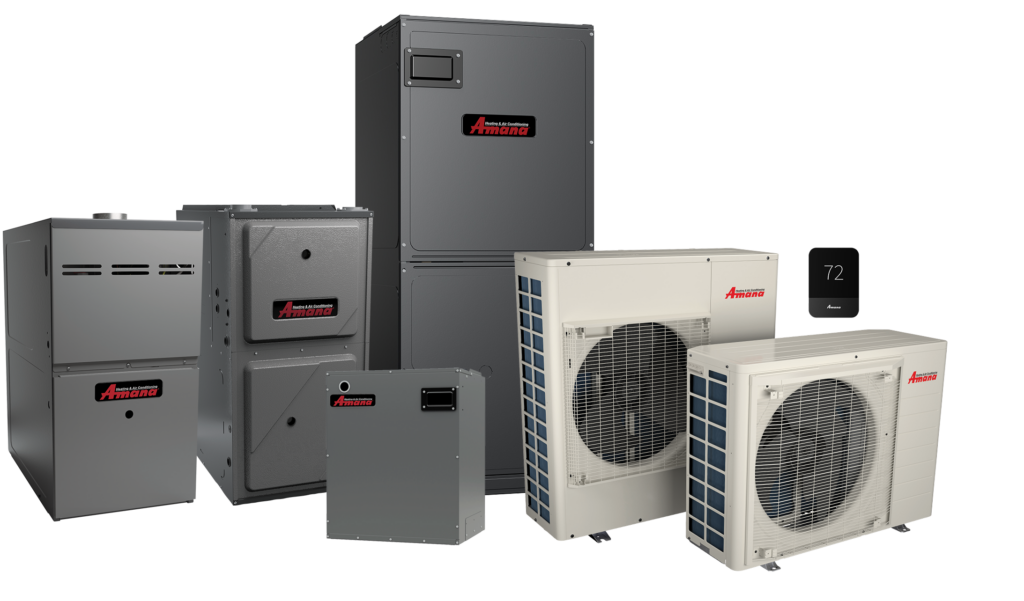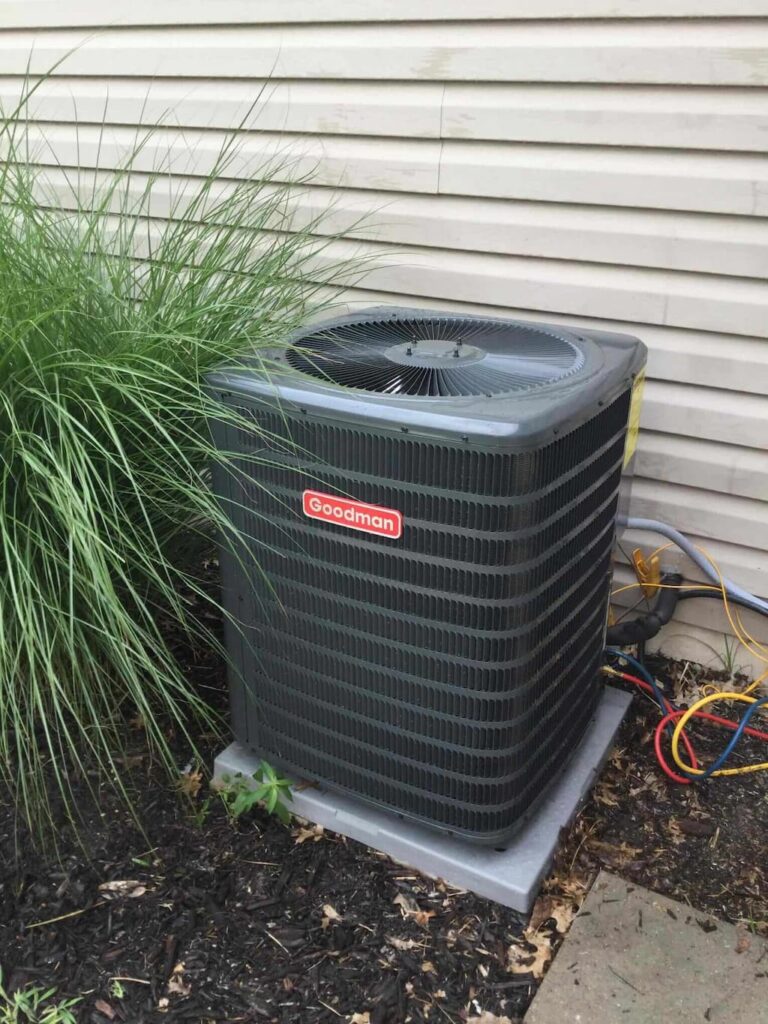Cooling: Air Conditioning (AC) Services
Experienced HVAC Contractor for AC
No Problem Heating and Cooling will diagnose and repair, service, or replace your air conditioner quickly, conveniently, effectively, and affordably. We are your local AC service experts.
Our customers receive full service, along with knowledgeable system evaluations by one of our experienced technicians. So, you will always have a peace of mind with residential and commercial AC service at affordable rates.
No Problem Heating and Cooling uses innovative technology, including top rated products customers use every day to keep your monthly cooling bills low. We offer same day service in St. Louis and St. Charles counties with a full system checkup from our AC solutions specialist with every call.
If you are having, any issues with your air conditioning system, call us today.
Professional, Certified AC Technicians
Our highly trained technicians will ensure that you have the best possible experience from your first call through the installation itself and into an ongoing maintenance schedule. We work to make lasting relationships with our clients. Because we understand that only quality service and professionalism will continue to make that happen.
We’ll show up on time and will be prepared.
We’ve stocked our repair trucks with all of the right tools, equipment, and parts to get the job done right. We carry all of the common parts to service all major makes and models so we’ll be able to get your air conditioner back in good working order in just one visit. There’s nothing worse than having to run back and forth trying to locate parts. We respect your time and feel you shouldn’t have to wait or pay for the added expense of time.
We’ll treat your home as if it were our own.
When the technician arrives, they’ll be in a clean and crisp uniform. Our trucks will be clearly marked. All of our technicians are prescreened and undergo criminal background and drug testing. We only hire the best technicians who are part of your local community. They exhibit traits of high integrity, character, and respect – and if you had some time to poke around on review sites you’ll discover your neighbors highly recommend them. At our company, we treat our technicians right and invest in their success so they’ll take care of our customers – and that’s exactly the type of person who will show up when you call.
We’ll start out by running a diagnostic on your equipment and from here the technician will be able to provide you with the best solution to repair the problem.
So, you’ll be presented with your options and before you agree to any work we’ll give you a clear and upfront price. We’ll never start any work without your approval – that way everybody is on the same page.
Give us a call and schedule same-day service on AC repair. In return, we’ll treat you right and get your air conditioner up and running today.

AC Repair
A central air conditioner breakdown never happens at the right time. Odd noises, Blowing warm air, ice buildup, water leaking, unusual smells, excessive cycling or circuit breakers tripping are obvious signs you need your air conditioner serviced by a professional. Call us for your AC repair service.
If you are looking for prompt same day air conditioning repair from a local, qualified and experienced company with an exceptional reputation than you’ve come to the right place. Our certified technicians are standing by, ready to repair your air conditioner today. Just give us a call and speak to a live customer service specialist and we’ll dispatch a certified technician to your location right away for AC repair service.
We take great pride in being your family-owned local air conditioner service company. When a No Problem Heating & Cooling technician arrives at your location you can expect a top-notch experience.
Common AC Repairs in Your Home
In addition to changing and cleaning air filters, we’ll always check that the following air conditioning components are in proper working order:
- Capacitors
- Evaporator Coils
- Fuses
- Drain Lines
- Relays
- Indoor Blower Motors
- Outdoor Fan Motors
Remember that No Problem Heating and Cooling also provides customers with excellent service guarantees, warranties on all parts and services, plus seasonal rebates. We want to be sure that you feel at ease and so we work to take the worry out of air conditioning maintenance.
How To Tell When It's Time for an AC Replacement
We get it. Taking the plunge to invest in a brand-new AC unit can be a hard decision to make. After all, if it’s possible to repair what you already have, then why shell out all that money for a new air conditioner installation.
But installing a new system has its benefits. For one, your indoor air quality will drastically improve. Additionally, newer units are much more efficient, which means you’ll be helping the environment in addition to lowering your utility and energy bills.
Though those benefits may sound great, it can still be hard to know when to pull the trigger. Here are some telltale signs that indicate when it’s time for an air conditioner installation.
- Your AC unit is more than 15 years old
- Your AC unit has been breaking down more than usual
- Your AC unit produces exorbitant bills
- Your home is not evenly cooled
- Your AC unit sounds like it struggles to turn on
If you notice one or more of these signs, it’s most likely time to replace your AC unit. Call our team if you’re struggling to determine whether now is the best time. We’ll be happy to inspect your unit and offer reliable, trustworthy advice.

How Much Does It Cost to Replace an Air Conditioner?
The next big question most St. Peters and St. Charles homeowners have is, “How much will this cost?”
That answer depends on a variety of factors.
For example, do you have an existing ducted air conditioning system? Are you planning to purchase a more efficient, environmentally-friendly system than the one you had before?
Central air conditioners tend to cost a few thousand dollars, with the price to install being about the same. While it’s hard to present a general AC installation cost, you most likely will be paying anywhere between $4,000 and $8,000 for your new unit. Check out the electric rebates from Ameren and gas rebates from Spire that are available. No Problem Heating and Cooling is a 2023 Platinum Level Contractor with Ameren Missouri and is part of Spire’s National Contractor Network.
What is the Best Cooling System for Your Needs?
At No Problem Heating and Cooling in St. Peters, MO, we’re well experienced with a number of premier cooling technologies. Of course, the best AC system depends greatly on the type of home you have.
For example, if you have a larger home with many rooms, you may want to consider a ducted central air system. If you have a smaller home or condo, you may want to consider a mini split ductless system.
Your ideal system depends on your home, budget, and priorities. Contact us today for help deciding which air conditioner system is best for you and your family.
What to Expect During AC Installations
Depending on your system and your home’s current air conditioning capabilities, the installation process should take anywhere from one business day to one full week of work.
For example, if we need to install or repair a ductwork system, this will extend the installation process a considerable amount. However, if you choose a mini ductless system, the installation process should only take about a day.
However long it takes, you should expect professional, courteous service. We treat your home as if it were our own, keep disruptions to a minimum, and always clean up after our work.
Once we’re finished, we’ll review our work with you to answer any questions you may have.

How to Take Care Your New AC Unit
Once you complete your AC installation, the next hurdle is taking proper care of it. AC units that are properly cared for not only last longer but also perform much better.
The best way to take care of your new unit is to schedule annual maintenance. When you schedule regular tune-ups, you allow technicians to stop problems before they spiral and cause more damage to your unit. We also tighten, lubricate, and clean your system to ensure that it’s in working order.
After you go through the rigorous process of an air conditioning installation, make sure to protect your investment. Schedule annual maintenance appointments for optimal AC health and functionality.
AC Tune Up & Maintenance
If you’re looking for the most affordable maintenance option for your residential property, No Problem Heating and Cooling ac tune-up is the right choice for you.
We can all work together in being proactive even as we keep it simple. Depending on the type of air conditioning unit you have and whether it is a cool or hot air system or both, will help us to determine when and what exactly needs to be tuned-up.
Once a year is more than enough for our highly trained and certified technicians to determine what is needed and to immediately take care of it. The annual ac tune-up is a great opportunity for us to check in on the safety and efficiency of all common air conditioning problems as well as whatever specific needs and unique challenges your home air systems may need.
Not properly changing your HVAC filter can cause freon issues over time. We ensure you know proper procedures for handling monthly filter changes.
Let us take care of all scheduled maintenance and annual tune-up requests. Call us today to learn more about our annual ac tune-up services and pricing options or to enroll in one of our ongoing maintenance service contracts.
Catering to St. Charles, St. Louis, Warren, and Franklin counties, our HVAC Club Membership guarantees year-round comfort. Enjoy priority service, cost savings with discounted rates, and scheduled maintenance. We service all AC, heat pumps, and HVAC models, safeguarding against unforeseen heating and cooling issues exacerbated by temperature fluctuations, ensuring preparedness during extreme weather conditions. Regular maintenance is vital for system reliability. Don’t hesitate, enroll today!
Emergency Same Day AC Repair
At No Problem Heating and Cooling, we provide emergency AC repair services and installations for homeowners that get caught with a busted unit in the middle of the summer. Not only is it uncomfortable to live without an air conditioner, but it’s unsafe, too. If your unit breaks and you need air conditioning repairs or replacement, our team is on standby with experienced, veteran technicians, competitive prices, and robust technology. Give us a call 24/7, and we’ll get you scheduled for the very next appointment available.
How the No Problem Heating & Cooling Process Works
- Call Us at (314) 402-8240: Your call will be immediately fielded by an informed and knowledgeable staff member who will help set your installation request in motion.
- Prompt and Prepared Arrival: A trained technician will promptly arrive in uniform at your home. Because our professionals are always prepared with industry-leading technology and equipment.
- Up-Front Pricing: We believe you should know what to expect from beginning to end of this process. So, our up-front pricing and estimates provide our customers with a sense of ease and support before we begin.
- Scheduled and Timely AC Installation, Repairs, and Maintenance: We take the utmost care in striving to complete all projects within a timely manner so as not to disrupt your home environment.
What Do We Guarantee?
We are proud to guarantee an excellent customer service experience and the success and care of our parts, design, and craftsmanship. We also provide warranties on all parts and services in the rare event that something should not go according to plan.
The No Problem Heating and Cooling Advantage
- We have professional affiliations and accreditations.
- We consistently receive positive customer review feedback.
- We offer warranties, rebates, and service guarantees.
- We believe in investing in our team through ongoing employee training.
- We are committed to community service and green initiatives.
- Most importantly, we ensure prompt and timely scheduling and performance.

Let our professionals do the work for you. At No Problem Heating and Cooling, we get the job done right—the first time.
So, whether your current air conditioning system needs routine maintenance, repairs or a full replacement, call No Problem Heating and Cooling! Call us today at (314) 402-8240 to book an appointment with our expert AC technicians. You can also email us through our contact form.
Schedule Service or Request a Quote
Areas We Serve
Proudly installing, repairing, and maintaining all types of residential and commercial HVAC systems in St Charles and the St Louis Metro Area.
- St Charles County, Missouri
- St Louis County, Missouri
- Warren County, Missouri
- Franklin County, Missouri
How Can We Help You Today?
Serving the counties of St Charles, St Louis, Warren, and Franklin, our HVAC Club Membership ensures year-round comfort, offering priority service, discounted rates, and regular maintenance. We cover all heat pump models, protecting against unexpected heating and cooling problems that often arise with fluctuating temperatures and ensuring preparedness during extreme weather. Regular maintenance is essential for system reliability. Sign up today!



